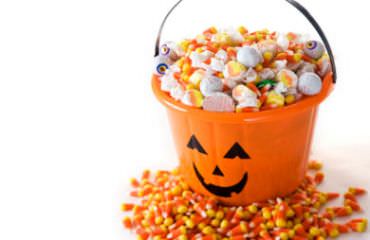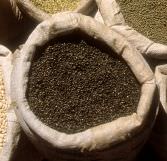
Tanya earned her dietetics degree, completed a dietetic internship and served as a clinical dietitian in several Cincinnati hospitals. With more than 20 years of nutrition education experience, she is also a member of the American Association of Diabetes Educators.![]()
Read More of 's Blogs:

Is Psychology the Key to Better School Nutrition?
Professionals frequently use psychological techniques as part of their sales strategies. Similar approaches have been used in the restaurant industry as well. Psychologists help design menus, interior layouts, food presentation, and to train servers all in an attempt to influence how much we spend when we visit.
Earlier this month the USDA announced a new initiative using psychology and cafeteria design. They hope small, subtle, but intentional changes suggested by behavior scientists will help improve school lunch choice to reduce childhood obesity rates.
Some of the outlined smarter lunchroom suggestions make logical sense.
- Offer a salad bar and make it easily accessible near the check out.
- Place colorful fresh fruits in eye appealing fruit bowl arrangements.
- Place chocolate or strawberry flavored milk behind the plain low fat milk so first impulses cause students to select the plain milk.
- Provide smaller sized serving bowls to reduce portion sizes selected in self serve lines.
- Offer a choice when possible especially for fruits and vegetables.
- Place the vegetables at the start of the line instead of the entrée so children select them first.
- Re-name healthy food options with creative descriptive names that entice selection.
- Hide treats to make them less noticeable and require cash payment for desserts instead of including in meal price to discourage selection.
- Make a "healthy express" checkout for students that do not select snacks or desserts.
Posted 11/1/2010 5:56:04 AM By: : 42 comments 18,841 views

Are All Calories Created Equal?
Ideally, a healthy body is comprised of about 55-60 percent water, 10-20 percent muscle and lean tissue, 6-8 percent bone minerals and about 18 (men) or 22 (women) percent fat. When fat reserves rise higher than desired and weight loss is indicated, many diet options can be considered. However, the tried and true equation has been:
Cutting calories + Increasing activity + maintaining this lifestyle for life = healthy weight
Dietitians from the American Dietetic Association (ADA) and other nutrition professionals have long held the belief that it's not what you eat, it's how much. Based on this belief, any eating plan can achieve weight loss as long as eating is balanced and sensible and moderate exercise is included.
Today, sensible eating has become defined as one that is low in fat, sugar, cholesterol and salt and rich in whole grains and lean proteins much like the DASH diet plan. Now a growing number of researchers are looking at the idea that perhaps the source of calories is just as important as the number. Do their findings show that not all calories are created equal?
Posted 10/28/2010 6:00:54 AM By: : 38 comments 20,012 views

Which is Better? The Halloween Edition
Even when you are trying to be on your best behavior and outsmart temptation, Halloween candy can be too much. It is possible to make a choice that not only treats your sweet tooth but also provides some nutritional benefit with the calories.
Posted 10/25/2010 11:21:39 AM By: : 60 comments 43,361 views

Celery Could Help Retain Your Memory
Celery is often wrongly touted as an example of a negative calorie food. People like to believe low calorie foods like celery take more calories to digest them than they contain so they have no influence on weight. Unfortunately, there is no such thing as a negative calorie food. Although, celery does have a high water content, which makes it a great choice for juicing while also being low calorie and high in fiber, it is not calorie free. Although it may not be a negative calorie food, new research suggests it could be a memory super food.
Posted 10/21/2010 10:40:32 AM By: : 110 comments 25,951 views

Tricks for Healthier Halloween Treats
There are not too many tricks at Halloween these days except for an occasional "ding-dong-ditch" or two. However, there are plenty of treats to tempt and entice adults and children alike. There are tricks to help you avoid the Halloween treats as well as tactics to outsmart temptations but sometimes they don't do the trick.
When I was young and trick-or-treating in our neighborhood, I looked forward to the homemade cookies, hot cider and popcorn balls. Back then, neighbors knew your name as well as your parents and children focused less on the amount of candy they would collect and more on the festive experience of the evening. We might only visit ten houses but we would spend time at half of them as we talked on the porch, shared some hot cider, and catching up with one another. Unfortunately, times have changed and the focus is on getting as much candy as possible in the designated time. Although the commercial side of the season focuses on candy and sugary sweets, you don't have to. Here are some alternative tricks to make this Halloween your healthiest treat yet.
Posted 10/18/2010 5:00:00 AM By: : 65 comments 23,378 views

Folate Levels Influence Depression Symptoms
Previous studies have found an inverse relationship between B vitamins and homocysteine levels. Likewise, higher homocysteine levels have been linked to atherosclerosis and higher risks of fatal coronary heart disease (CHD) and strokes. CHD studies have found a reduction in the average level of homocysteine since folic acid fortification was instituted in the U.S. A new study ties low serum folate levels with increased risk of depression symptoms as well. The cross-sectional population-based study is one of the first conducted among U.S. adults since the mandatory fortification of folic acid. The study also looked at vitamin B12 and total homocysteine (tHcy) levels as well.
Folate is a water-soluble B vitamin naturally occurring in food. Folic acid is the synthetic form added to foods for fortification or in supplements. Diets rich in whole foods typically are rich in folate since leafy green vegetables, citrus fruits and dried beans and peas all provide natural sources. Since the 1996 FDA requirement of folic acid fortification, enriched breads, cereals, flours, pastas, rice, and other grain products, provide other popular sources to the American diet. Since depression is a common medical condition, surrounded by myths and misconceptions about its causes, symptoms and seriousness, learning more about its relationship with folate levels could be beneficial for those that are trying to cope.
Researchers for the study, published online last month in Psychosomatic Medicine, used cross-sectional information from NHANES data collected from 2005-2006. Data from more than 2,500 adults between 20-85 years of age were included. In addition to folate, vitamin B12, and total homocysteine levels, researchers also looked at data related to demographics, diet, physical activity, smoking habits, blood pressure, and depressive symptoms. The study indentified a significant association between folate levels and elevated depressive symptoms as well as elevated homocysteine levels especially in people over the age of 50.
So what do these results mean for those dealing with depression issues?
Posted 10/11/2010 6:00:00 AM By: : 21 comments 23,976 views

Diet and Exercise Influence Alzheimer's Disease Risk
Last summer I shared about my grandmother and provided information regarding an opportunity to participate in The Alzheimer's Disease Neuroimaging Initiative Grand Opportunity (ADNI-GO) Study. Because of that blog, we received an interview opportunity with Dr. Michael Rafii, MD, PhD to learn more about groundbreaking Alzheimer’s disease (AD) research.
Dr. Michael Rafii, MD, PhD, is co-director of the Memory Disorders Clinic at UCSD Perlman Ambulatory Care Center in La Jolla, California and Assistant Professor of Neurosciences at the University of California, San Diego. He is also the Associate Medical Core Director of the Alzheimer's Disease Cooperative Study (ADCS) specializing in cognitive disorders, including dementias such as Alzheimer's Disease. We focused our questions on what we care most about – healthy eating and exercise. We think you will find his responses very applicable especially if you or someone you love may be at increased risk of developing Alzheimer's disease.
Posted 10/7/2010 10:55:18 AM By: : 15 comments 18,603 views

How Does the NuVal Food Scoring System Work?
Last week I shared a few ways grocery stores are changing to better inform their patrons. More and more stores are including NuVal Nutritional Scoring information on item shelf tags. The system is intended to reduce consumers confusion related to food package marketing labels and claims. The scientifically based NuVal measuring system can help people make nutritionally informed food choices. However, that can only happen if you understand the system.
Posted 10/4/2010 5:59:08 AM By: : 82 comments 28,295 views

Are Things Changing in Your Grocery Store?
People purchase food from a variety of grocery options. Some prefer the convenience of one stop shopping that supercenters offer. Others focus on the benefits of buying in bulk through warehouse clubs. More and more people are visiting dollar stores and extreme-value outlets to get the most for their food dollar. We have provided guidelines to help our readers save money by planning ahead. We have shared ideas suggesting shopping the perimeter as well as tips to make over your meals. Now it seems grocery stores are getting in the act too by providing new opportunities to share information at the point of purchase.
To help stores develop strategies that reach shoppers in their target markets, The National Grocers Association conducted a consumer survey earlier this year. Some of the results were interesting. For instance, 76 percent of the respondents said accurate shelf tags were very important. The majority of respondents felt low prices were very important as well and 84 percent believed product freshness on the shelf was of high importance. Where do consumers get information about nutrition issues on a regular basis? Seventy-five percent in this survey relied on the internet and 64 percent used information they found in magazines. Only 33 percent were getting nutrition related information at the grocery store. It appears stores are beginning to expand their services to make a shift in this area.
Posted 9/30/2010 6:07:35 AM By: : 55 comments 20,248 views

Is a New Health Commitment Group a Positive Collaboration?
I received this blog link in my e-mail inbox last week. As the mother of high school students and a nutrition professional, I had mixed feelings about the information it contained.
On one hand I was excited that a new Healthy Weight Commitment Foundation has been created to "help reduce obesity, especially childhood obesity by 2015." That is a great thing right? Healthy living is something our company is very interested in and what I spend my time promoting each day. The e-mail however raised concerns with brand marketing that would take place in public schools. The headline and information shared made me a little concerned so I did a little more research.
Posted 9/27/2010 5:46:22 AM By: : 65 comments 18,823 views

Green Tea Benefits: Fact vs Fiction
More than likely, you have heard the health claims about green tea. Perhaps you have seen products containing green tea extracts on store shelves and read the claims of antioxidant benefit. You may also have read reports that green tea makers are in hot water with the FDA for making "unsubstantiated nutrition claims."
With so many things flying around, it can be difficult to decipher fact from fiction. Here is some basic information we hope will help you decide where green tea fits in your healthy beverage options.
Posted 9/23/2010 6:06:03 AM By: : 61 comments 46,364 views

Iron Foods Can Energize Your Body
Minerals work throughout the body to regulate processes and provide structure. Iron while an essential trace mineral, is not widely talked about. Because it can frequently be low and zap your energy, let's take a closer look at this essential nutrient.
Posted 9/20/2010 6:00:00 AM By: : 85 comments 50,733 views

The Reality of Adult Picky Eaters
Freaky Eaters is a new TLC show shedding light on eating issues facing many adults. According to this Los Angeles Times show description, many times there are psychological components to freaky eating issues. While the show is focusing on people that avoid specific foods or only eat certain foods or food groups, picky eating for adults can be much more perplexing.
Posted 9/13/2010 6:00:00 AM By: : 159 comments 41,265 views

Is Black Rice the Next Super Food?
There are many cost effective and nutrient rich foods. Brown rice is one choice frequently selected as a side dish or to stretch a casserole. We have known for a while that fruits such blueberries and blackberries are high in antioxidants. New research presented at the American Chemical Society meeting has found that black rice might top them both in the cost effective nutritious super food category.
Posted 9/6/2010 1:00:00 PM By: : 123 comments 43,306 views

'Fake' Fiber in Your Food? How to Spot It
Studies over the last two decades have revealed ways to chemically alter naturally digestible starches. The chemical modifications introduce bonds that make them non-digestible by human enzymes in the digestive tract. Benefits of the newly manufactured starch fiber additives are largely unknown.
We have talked about the new manufactured fibers known as stealth fiber. We have mentioned there is a new fiber category in the midst of the FDA rulemaking process apparently with the full backing of industry. New products are finding a place at the manufacturing table. New fiber enhancement products are being added so baked goods, snack foods, breakfast cereals, and nutrition bars can meet "good source of fiber" or "excellent source of fiber" labeling claims. Now we need to talk about how you can use this information.
You will not find "stealth fiber" listed on the food label. You may see or hear "modified natural fibers" used in marketing campaigns. Strange derivative terms for natural portions of wheat, potato, or corn are more likely to appear on labels. It will be important for consumers to have an understanding of such terms as an indicator of modification. Here are some specifics to help you decipher food labels as you interpret product fiber sources.
Posted 9/2/2010 6:48:16 AM By: : 87 comments 48,305 views
‹ Back Read More Entries ›




